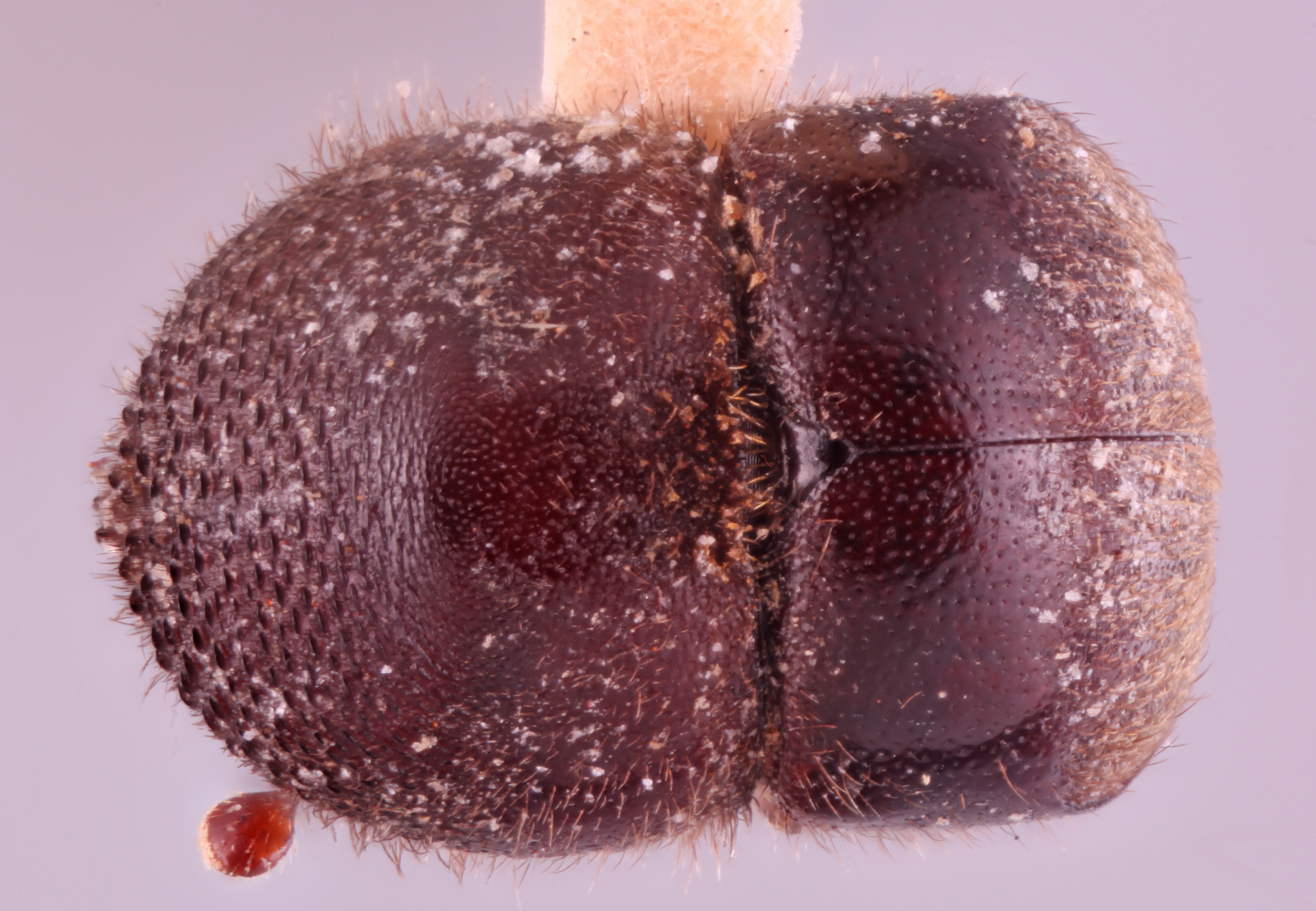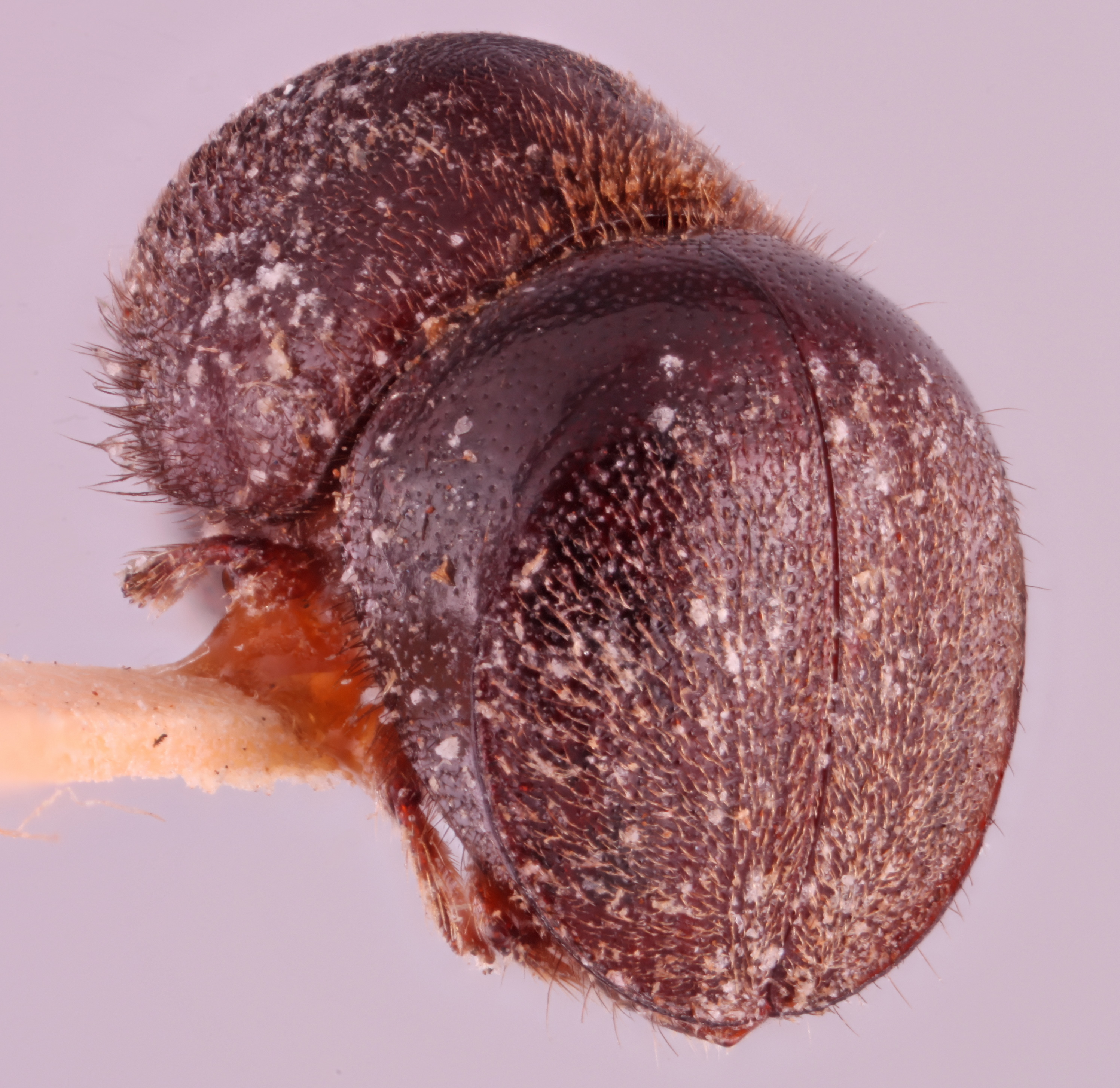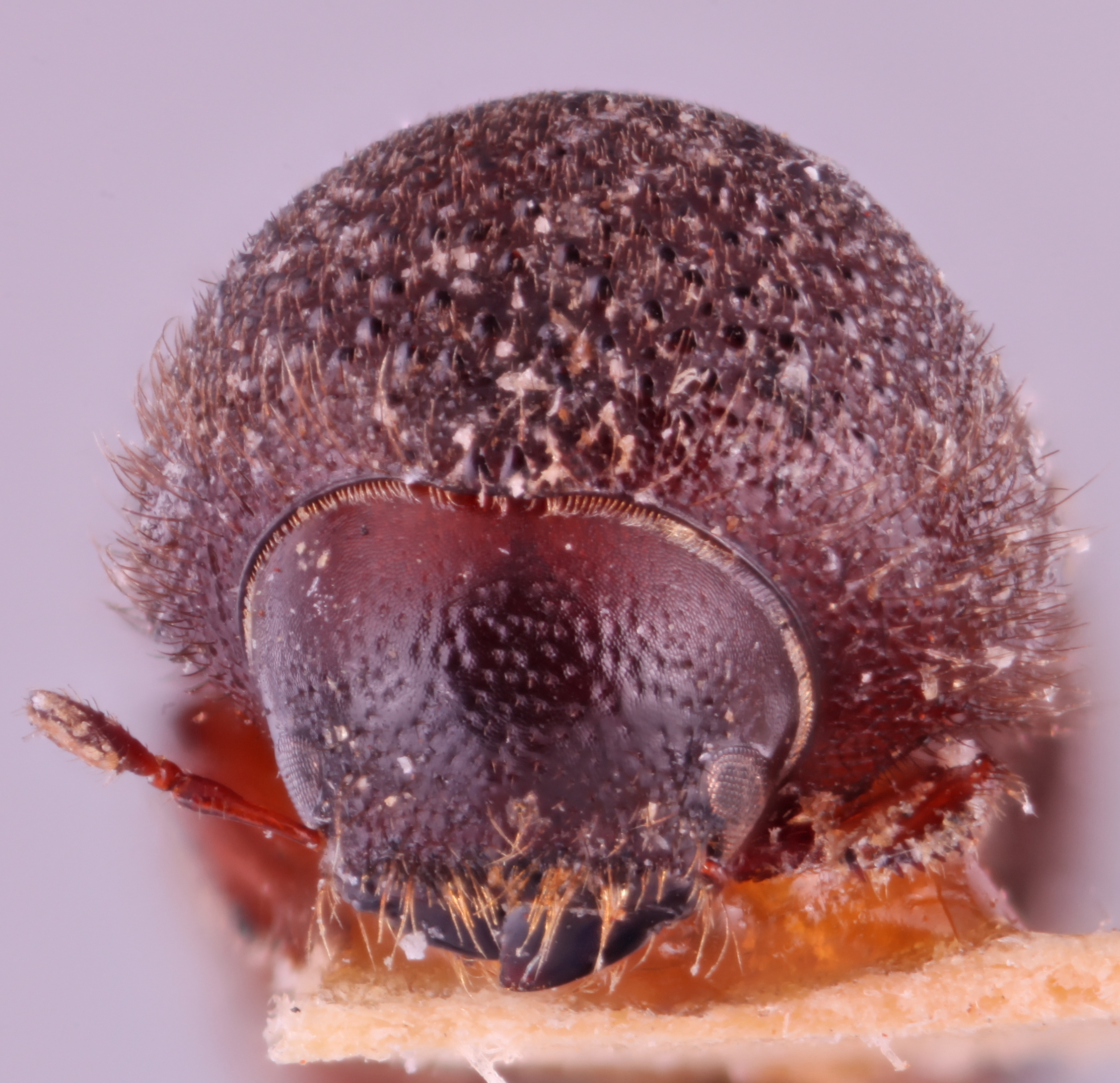Cnestus ater
|
Cnestus ater (Xyleborus retusipennis holotype) lateral; S.M. Smith |
|
Cnestus ater (Xyleborus retusipennis holotype) dorsal; S.M. Smith |
|
Cnestus ater (Xyleborus retusipennis holotype) declivity; S.M. Smith |
|
Cnestus ater (Xyleborus retusipennis holotype) frontal; S.M. Smith |
Taxonomic history
Xyleborus ater Eggers, 1923: 210.
Xylosandrus ater (Eggers): Wood 1989: 177.
Cnestus ater (Eggers): Dole and Cognato 2010: 528.
Synonyms
Xyleborus retusiformis Schedl, 1936d: 31. Wood 1989: 177.
Diagnosis
3.9−4.1 mm long (mean = 4.0 mm; n = 4); 1.63−1.70 times as long as wide. This species is distinguished by the presence of a mesonotal mycangial tuftmycangial tuft:
tuft of setae that denotes the mycangia exterior opening
 on the pronotalpronotal:
on the pronotalpronotal:
pertaining to the pronotum
basebase:
point or edge closest to the body; opposite of apex ; elytralelytral:
; elytralelytral:
pertaining to the elytra
discdisc:
the flat central upper surface of any body part (e.g. pronotum and elytra) 4−5 times scutellum length; declivitydeclivity:
4−5 times scutellum length; declivitydeclivity:
downward slope of either the pronotum or elytra
 , obliquely truncateobliquely truncate:
, obliquely truncateobliquely truncate:
nearly truncate but rounded not flat in lateral view
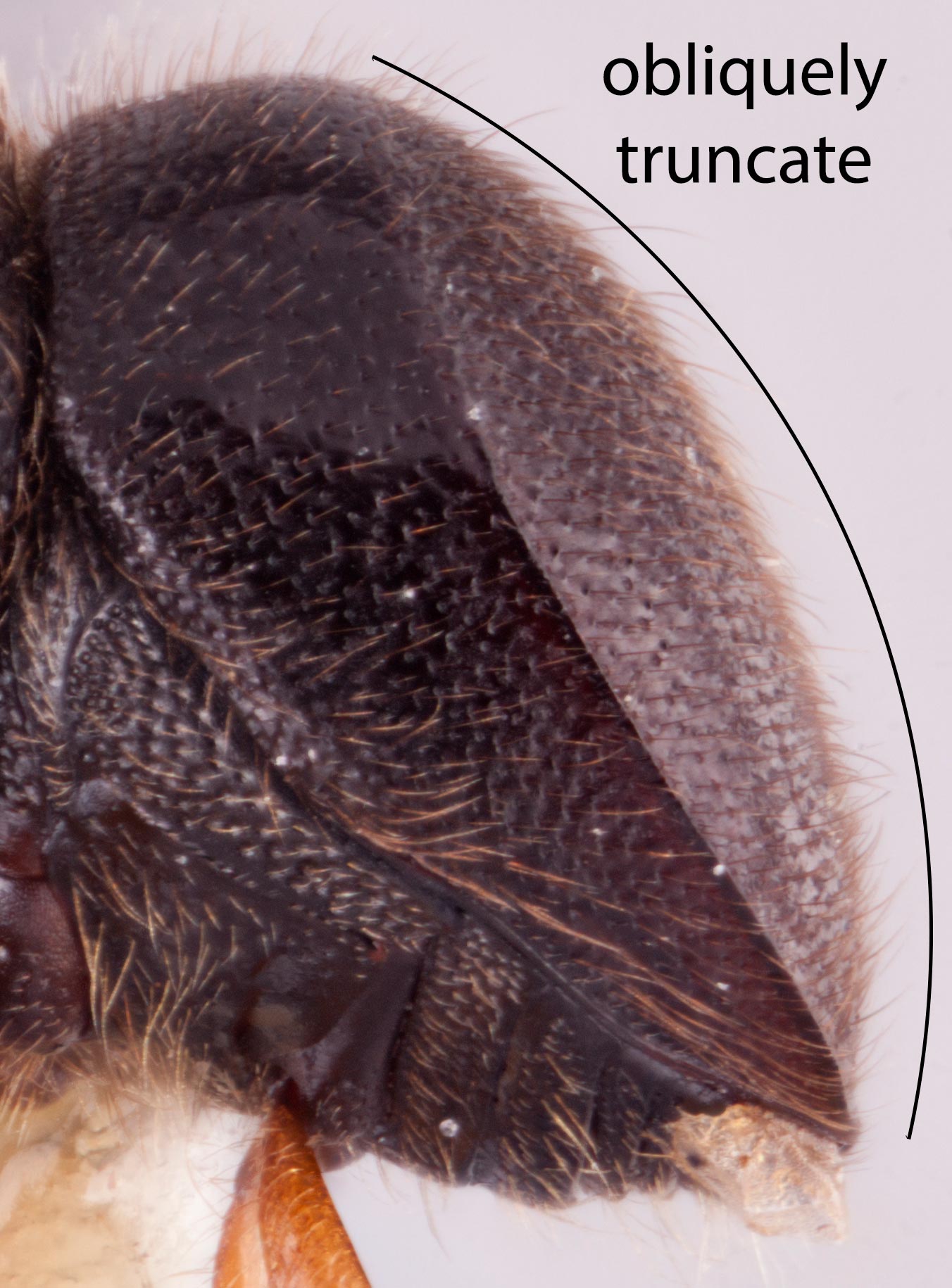 ; pronotumpronotum:
; pronotumpronotum:
the dorsal surface of the thorax
type 1 when viewed dorsally; antennalantennal:
pertaining to the antennae
club type 2, with 2 sutures visible on posteriorposterior:
toward the rear end; opposite of anterior
 face; antennalantennal:
face; antennalantennal:
pertaining to the antennae
funicle 4-segmented; protibiaeprotibia:
tibia of the first pair of legs
obliquely triangular; procoxae narrowly separated; declivitaldeclivital:
pertaining to the elytral declivity
posterolateral margin weakly carinate from apexapex:
point or edge furthest from the body; opposite of base
 to declivitaldeclivital:
to declivitaldeclivital:
pertaining to the elytral declivity
basebase:
point or edge closest to the body; opposite of apex along interstriaeinterstria:
along interstriaeinterstria:
longitudinal spaces along the elytra between the striae, which is not as<br />
impressed and bear smaller punctures.
 7; declivitaldeclivital:
7; declivitaldeclivital:
pertaining to the elytral declivity
interstriae weakly granulategranulate:
pertaining to a coarse, grainy surface texture
 , setose with 5−6 rows of recumbentrecumbent:
, setose with 5−6 rows of recumbentrecumbent:
pertaining to setae that are flat against the cuticle
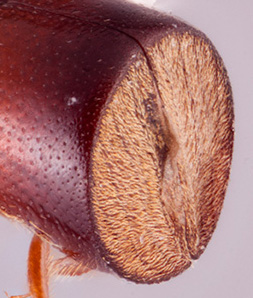 hair-like setaeseta:
hair-like setaeseta:
small hair-like or scale-like structure
on interstriaeinterstria:
longitudinal spaces along the elytra between the striae, which is not as<br />
impressed and bear smaller punctures.
 2−3; striaestria:
2−3; striaestria:
punctures in rows, which may or may not be impressed to make grooves indistinct on declivitydeclivity:
indistinct on declivitydeclivity:
downward slope of either the pronotum or elytra
 , striaestria:
, striaestria:
punctures in rows, which may or may not be impressed to make grooves 1 and 2 impressedimpressed:
1 and 2 impressedimpressed:
a depression in a surface
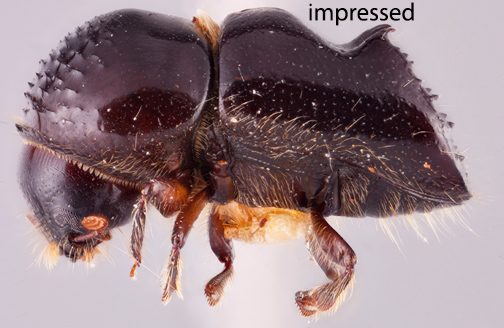 ; discaldiscal:
; discaldiscal:
pertaining to the disc of either the pronotum or elytra
punctures dense, confusedconfused:
of markings, having indefinite outlines or running together as lines or spots without definite pattern; usually referring to punctures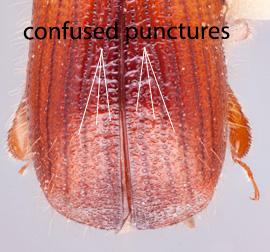 , surface distinctly reticulatereticulate:
, surface distinctly reticulatereticulate:
superficially netlike or made up of a network of lines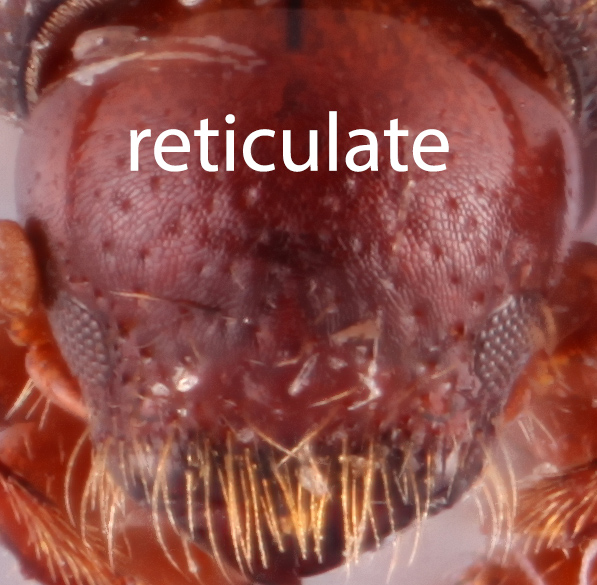 between punctures; and body black with basalbase:
between punctures; and body black with basalbase:
point or edge closest to the body; opposite of apex part of pronotalpronotal:
part of pronotalpronotal:
pertaining to the pronotum
discdisc:
the flat central upper surface of any body part (e.g. pronotum and elytra) sometimes orange or brown.
sometimes orange or brown.
May be confused with
Cnestus gravidus, C. improcerus, C. mutilatus, and C. testudo
Distribution
'Borneo’, China (Fujian, Yunnan), Indonesia (Sumatra), East & West Malaysia
Host plants
polyphagous (Browne 1961bBrowne 1961b:
Browne FG. 1961b. The biology of Malayan Scolytidae and Platypodidae. Malayan Forest Records 22: 1-255.)
Remarks
Browne (1961b) describes the gallery system and biology.
DNA data
specimens not available for sequencing


